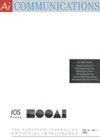基于相似性的图神经网络对抗性攻击防御
IF 1.4
4区 计算机科学
Q4 COMPUTER SCIENCE, ARTIFICIAL INTELLIGENCE
引用次数: 0
摘要
图神经网络(gnn)是图应用领域的强大工具。然而,最近的研究表明,gnn容易受到对抗性攻击,这可能导致gnn很容易对下游任务做出错误的预测。许多研究都致力于解决这个问题,但我们应该遵循什么标准来清理摄动图仍然是一个挑战。在本文中,我们提出了GSP-GNN,这是一个通用框架,用于防御可能扰乱图的大规模中毒攻击。GSP-GNN的重要原理是探索相似特性以减轻对图的负面影响。具体而言,该方法通过节点特征和图结构的相似性对对抗边进行修剪,消除对抗扰动。为了稳定和增强gnn的训练过程,当一层中有大量的边被修剪时,采用前一层的信息。在三个真实图上的大量实验表明,GSP-GNN的性能明显优于代表性基线,同时具有良好的泛化能力。本文章由计算机程序翻译,如有差异,请以英文原文为准。
Defending against adversarial attacks on graph neural networks via similarity property
Graph Neural Networks (GNNs) are powerful tools in graph application areas. However, recent studies indicate that GNNs are vulnerable to adversarial attacks, which can lead GNNs to easily make wrong predictions for downstream tasks. A number of works aim to solve this problem but what criteria we should follow to clean the perturbed graph is still a challenge. In this paper, we propose GSP-GNN, a general framework to defend against massive poisoning attacks that can perturb graphs. The vital principle of GSP-GNN is to explore the similarity property to mitigate negative effects on graphs. Specifically, this method prunes adversarial edges by the similarity of node feature and graph structure to eliminate adversarial perturbations. In order to stabilize and enhance GNNs training process, previous layer information is adopted in case a large number of edges are pruned in one layer. Extensive experiments on three real-world graphs demonstrate that GSP-GNN achieves significantly better performance compared with the representative baselines and has favorable generalization ability simultaneously.
求助全文
通过发布文献求助,成功后即可免费获取论文全文。
去求助
来源期刊

AI Communications
工程技术-计算机:人工智能
CiteScore
2.30
自引率
12.50%
发文量
34
审稿时长
4.5 months
期刊介绍:
AI Communications is a journal on artificial intelligence (AI) which has a close relationship to EurAI (European Association for Artificial Intelligence, formerly ECCAI). It covers the whole AI community: Scientific institutions as well as commercial and industrial companies.
AI Communications aims to enhance contacts and information exchange between AI researchers and developers, and to provide supranational information to those concerned with AI and advanced information processing. AI Communications publishes refereed articles concerning scientific and technical AI procedures, provided they are of sufficient interest to a large readership of both scientific and practical background. In addition it contains high-level background material, both at the technical level as well as the level of opinions, policies and news.
 求助内容:
求助内容: 应助结果提醒方式:
应助结果提醒方式:


